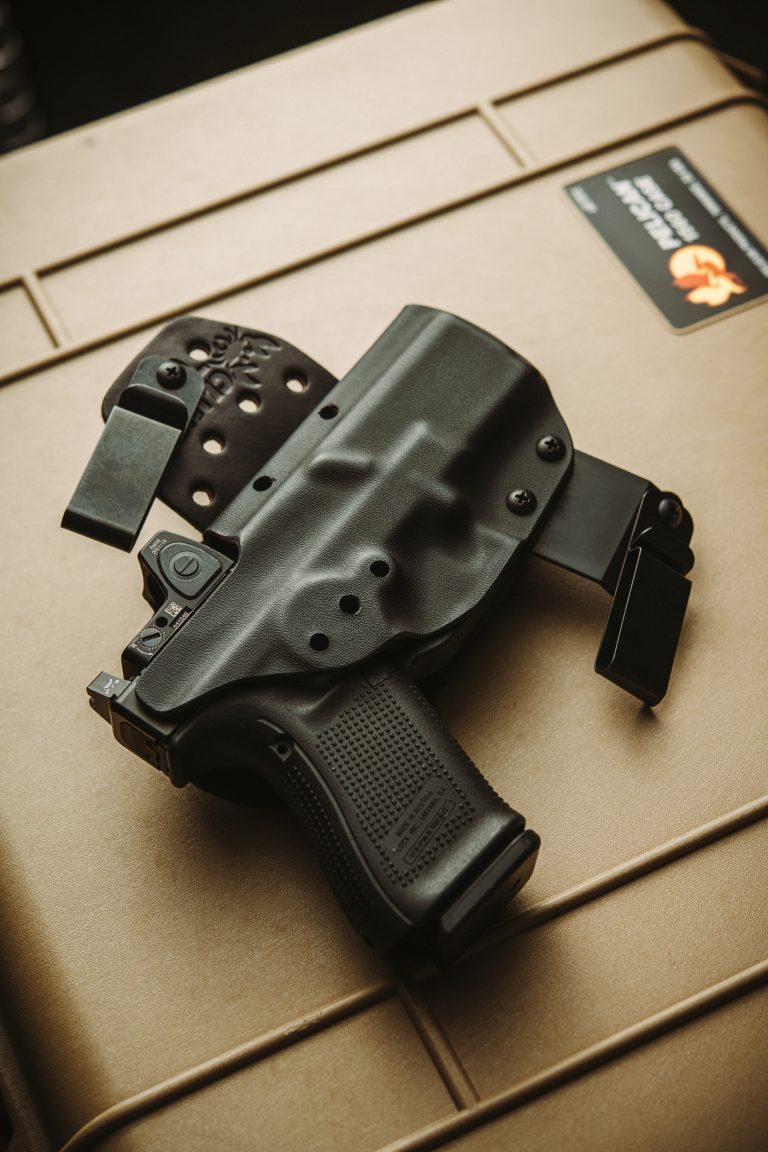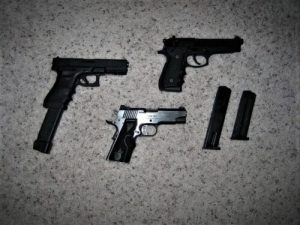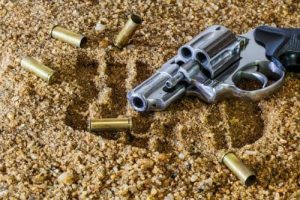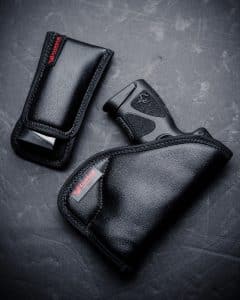
How to Draw from an IWB Holster
Before you draw from your IWB Holster
Before you even think about reaching for your gun in that IWB holster, there’s something important to consider. It’s not just about grabbing your firearm and being ready to go. There’s a whole lot more to it, and it starts way before your hand ever draws from your IWB holster like the ones found here at Clinger Holsters.
Step #1. Analyze the situation before you draw from your IWB Holster
Before deciding to draw from your IWB holster, it’s crucial to take a moment to evaluate the situation. Ask yourself, “Does this conflict truly require the brandishing of a firearm?” If the answer is no, then it’s best to try to de-escalate the situation as calmly and quickly as possible. Remember, the presence of a firearm can rapidly escalate tensions, potentially leading to irreversible outcomes. It’s always preferable to resolve conflicts without resorting to drawing your weapon, using communication, and situational awareness as your primary tools.
However, if you determine that the threat is immediate and poses a risk to your life or the lives of others, then drawing your firearm may be necessary. The decision to draw from your IWB holster is not made lightly. It comes with the heavy responsibility of potentially using lethal force in defense of life. When drawing from your IWB holster move on to step 2…..
Step #2. Get your shirt out of the way!
In the critical moments where you decide that you need to draw your firearm in self-defense, the way you handle your clothing can significantly impact the speed and efficiency of your draw. Using your weak hand, it’s essential to yank your shirt up high enough to ensure it does not hinder the speed or accuracy of your draw from your IWB holster. This step is crucial whether your shirt is tucked or untucked.
A shirt that gets snagged on your weapon as you draw is more than just a minor inconvenience; it’s a potentially dangerous delay in a situation where every second counts. The reality is that when the need arises to draw your pistol in a self-defense scenario, you’re often reacting to an immediate threat. Delays caused by your clothing can compromise not just the effectiveness of your draw but could also have dire consequences for your safety.
Step #3. Grip it firmly!
With your shirt efficiently cleared out of the way, the next immediate step in the process to draw from your IWB holster is to establish a firm and proper grasp on your pistol grip. This moment is critical: the way you grip your weapon now should be the exact grip you intend to use when firing. It’s essential to emphasize that the initial grip on your firearm isn’t just a preliminary touch; it must be your definitive, combat-ready grip from the outset.
When you reach for your firearm, your hand should come down in such a manner that your fingers wrap securely around the grip, with your thumb positioning itself naturally in readiness for firing. Ensure that your grip is both strong and correctly aligned, so that when you draw the weapon from the holster, you are already in the best possible configuration to aim and fire without any need for adjustment. This means that your grip should enable you to have immediate control over the firearm, ensuring that it becomes an extension of your body as you aim at the target.
Now that your shirt is out of the way, take a firm grasp of the pistol grip. Ensure that the way that you are gripping your weapon, is your intended firing grip.
You should not have to readjust your grip once the weapon is drawn.
Step #4. Bring it in tight!
When executing the draw from your IWB holster, it’s critical to maintain awareness of the muzzle’s orientation throughout the entire process. A fundamental principle of firearm safety is to ensure that the muzzle never crosses your body or points in an unsafe direction. As you initiate the draw, make a conscious effort to create the shortest arc possible from holster to ready position, keeping the muzzle pointed away from your body and any bystanders at all times.
Simultaneously, if your firearm is equipped with a manual safety mechanism, part of the draw sequence involves disengaging this safety and transitioning it into the FIRE position. This action should be swift and deliberate, ensuring that your firearm is ready to be discharged if necessary, while still adhering to the principles of safe firearm handling.
As you bring the firearm out of the holster, it’s essential to maintain control and keep it close to your body. By bringing the firearm in tight and close, pointed downwards at the low-ready position, you minimize the risk of the muzzle inadvertently sweeping across any unintended targets or bystanders. However, crucially, refrain from placing your finger on the trigger at this stage. Keeping your finger off the trigger until you are ready to fire is a foundational safety rule that cannot be emphasized enough.
Practice using your preferred stance
When it comes to effectively deploying your firearm, especially when drawing from your inside waistband (IWB) holster, familiarizing yourself with the foundational shooting stances is crucial. The three primary stances—Isosceles, Weaver, and Chapman—each offer unique advantages and can significantly impact your shooting accuracy, stability, and reaction time under pressure. It’s essential to explore each of these stances to determine which aligns best with your body mechanics, comfort, and tactical needs. By dedicating time to practice and refine the stance that suits you best, you’ll enhance your ability to respond effectively in a defensive scenario.
The process of drawing from your IWB holster and transitioning into your chosen shooting stance should be smooth and practiced. As you’re ready to engage, you’ll extend your pistol away from your body, seamlessly moving into the full expression of your stance. This outward push not only aids in aligning your sights for accuracy but also positions your body in a manner that’s conducive to managing recoil and maintaining balance.
For those seeking a deeper dive into the intricacies of these stances, Clinger Holsters highly recommends a detailed article by PoliceOne. It offers valuable insights and visual aids to help shooters understand and master the nuances of the Isosceles, Weaver, and Chapman stances, providing a solid foundation for anyone looking to improve their shooting fundamentals.
Practice re-holstering your weapon
Once you’ve successfully neutralized the threat and the immediate danger has passed, it’s vital to take a moment to comprehensively assess your surroundings. In the aftermath of a defensive scenario, awareness remains key. Remember, some attackers may not work alone; it’s possible that accomplices could be nearby. Before even considering reholstering your firearm, make sure to scan your environment thoroughly to ensure no additional threats are lurking. This careful vigilance ensures that you’re not caught off guard by another potential aggressor.
After confirming the area is secure and no further threats are present, it’s time to safely reholster your firearm. If your firearm features a safety mechanism and you engaged it during the encounter, ensure it’s returned to the safe position now, if that’s how you typically carry. The process of reholstering, especially after drawing from your IWB holster in a high-stress situation, requires patience and precision.
Practice makes perfect
Be sure to practice drawing and re-holstering your weapon from an IWB holster so you’re ready if you ever need to be. Having muscle memory is the only way to draw your firearm quickly and efficiently under stress. It takes a ton of practice to develop muscle memory.
We all pray that we will never need to draw our weapon for self-defense. However, because predators exist in our society, having a firearm on your hip can be very comforting. We hope that you learned how to draw from an IWB holster in an effective manner. Stay safe.





